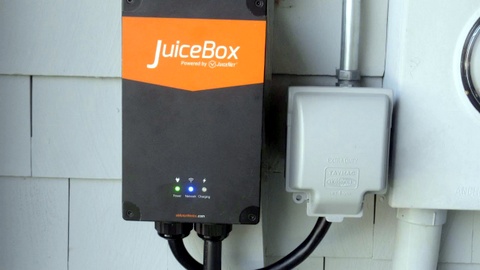
Dealing with a defunct charger company
October, Enel X Way North America Announce It will cease operations, leaving software features unavailable to users of the company’s JuiceBox EV charger. While servers will be running for an unspecified period of time and battery charging functionality will still be available, the company insists they will be looking for a long-term solution (which has yet to be disclosed).
While this news does not reassure users of JuiceBox charging stations, it means there is still time to migrate the Enel X Way JuiceBox 40 EV charger to the new Charging Station Management System (CSMS). Charging functionality isn’t lost yet, but it’s only a matter of time. Given this uncertainty, it is important to make sound plans for long-term success to guard against the risk and possibility of permanent Enel X Way server shutdowns.
For JuiceBox system owners, here are three possible approaches:
1.OCPP platform migration
Since the news of Enel X’s withdrawal from the North American market, dozens of OCPP-based charging station management platforms have been launched. The companies behind them have made various claims about their ability to help desperate system owners move the management of their JuiceBox chargers to a new cloud management platform. Some of these companies are indeed prepared and have processes in place to manage such migrations. But many people are not.
Many users will be attracted by the low cost and apparent simplicity claimed by these CSMS providers, but they are not without potential pitfalls. Among them:
- Partner Risk. What qualifications and track record does the solution provider have? How long have they been in business, and can you be sure they’ll support you long after you’ve transitioned to their platform? If your charger is redirected to a third-party OCPP server and the Enel X backend service is interrupted, you may not be able to migrate again. If the migration is unsuccessful, you may be in a worse situation than before. Therefore, choose a partner that offers a guarantee or guarantee for their services.
- Hidden costs. A reliable software-only vendor that offers migration services may require on-site personnel to update the firmware of every charger in the network. This will involve the billable time of the electrician or technician. Before taking this route, make sure you understand what is involved in the migration (beyond a new SaaS subscription).
- Stablize. OCPP platform migration may introduce new quirks and undesirable behaviors. Your device will run experimental, potentially unstable firmware, connect to third-party servers via Wi-Fi, and have no official customer service.

2. Removal and replacement
For some organizations, it may be worth the time and expense to remove the Enel X equipment and replace it entirely, but consider all costs first. Most device providers on the market charge more for their services than Enel X. This method is by far the most expensive, requiring significant equipment and labor expenses in addition to new service subscriptions.
3. Hardware-based charging station management system (CSMS)
A hardware-based CSMS solution offers the best of both worlds: by retrofitting existing JuiceBox systems, users can retain the hardware and avoid changing the firmware of each individual system (both expensive and time-consuming processes).
A hardware-based CSMS not only protects your hardware investment but also re-enables the now-lost access control, user management, monetization and reporting capabilities that EV charging station managers need to maintain efficient and cost-effective operations. This approach also has the following advantages:
- A trustworthy partner. Only a few EVSE providers offer hardware-based CSMS solutions, and those that do stand the test of time. For example, free plug-in Open since 2009.
- Approachable cost structure. Most hardware-based CSMS solutions are tailored for workplaces and multi-unit apartments, where users need to control access to chargers and charge for usage, but do not want or need to profit from charging.
- Flexible and scalable. Every EV charger has a lifespan, so when it comes time to replace the JuiceBox or any other system, you can do so without changing how the charging system is managed. As a bonus, you can add more chargers of any type, whether Level 2 chargers or DC fast chargers.
As the initial shock of JuiceBox users wears off, it’s important to consider all options to develop a cost-effective long-term plan to keep charging stations operating. The disadvantages of moving to a cloud platform or completely replacing a system often outweigh the advantages, but retrofitting the JuiceBox system to a hardware-based CSMS allows for greater control, flexibility, and most importantly, reliability.
The post Abandoned No More: 3 Options for Enel X Way Charging Station Operators appeared first on Clean Fleet Report.











Leave a Reply Cancel reply
You must be logged in to post a comment.